Yin Teng
Low-complexity Joint Phase Adjustment and Receive Beamforming for Directional Modulation Networks via IRS
Jul 11, 2022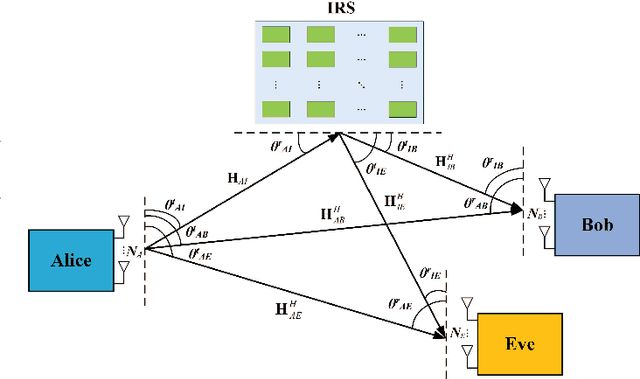
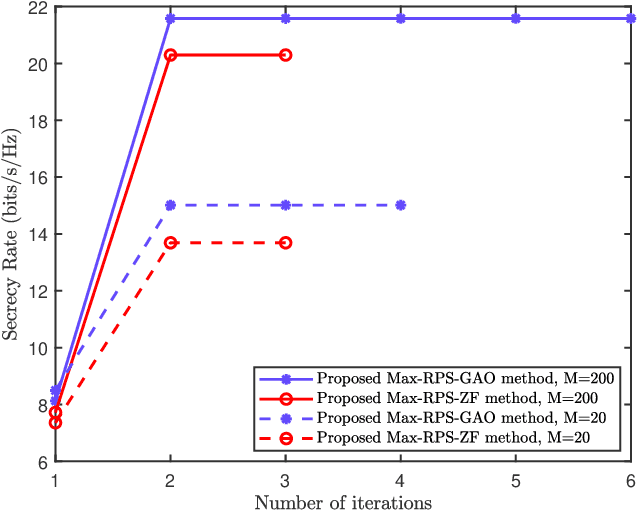
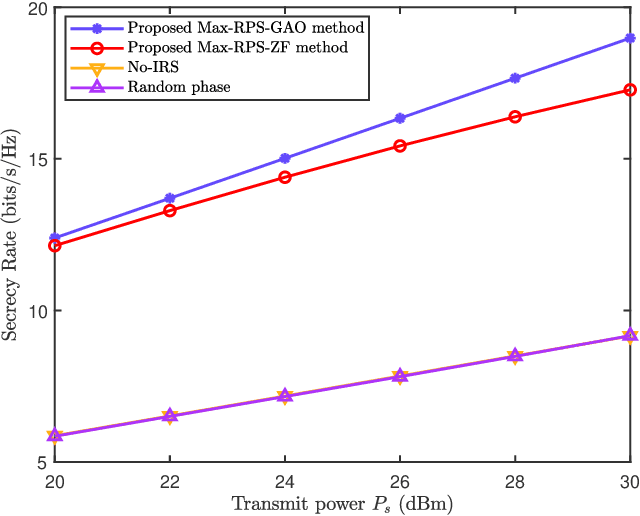
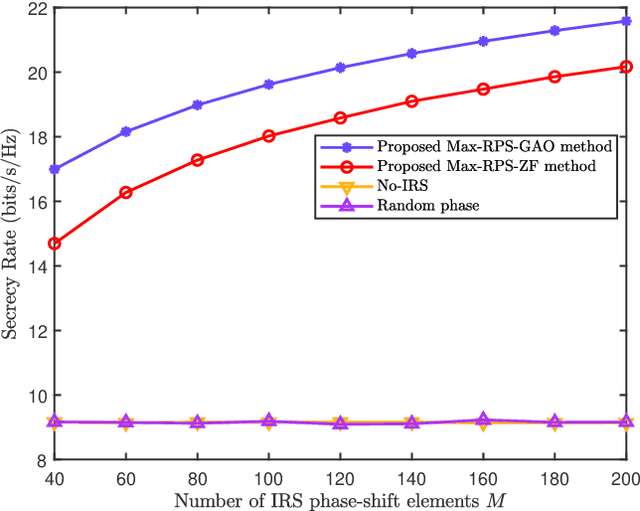
Abstract:Intelligent reflecting surface (IRS) is a revolutionary and low-cost technology for boosting the spectrum and energy efficiencies in future wireless communication network. In order to create controllable multipath transmission in the conventional line-of-sight (LOS) wireless communication environment, an IRS-aided directional modulation (DM) network is considered. In this paper, to improve the transmission security of the system and maximize the receive power sum (Max-RPS), two alternately optimizing schemes of jointly designing receive beamforming (RBF) vectors and IRS phase shift matrix (PSM) are proposed: Max-RPS using general alternating optimization (Max-RPS-GAO) algorithm and Max-RPS using zero-forcing (Max-RPS-ZF) algorithm. Simulation results show that, compared with the no-IRS-assisted scheme and the no-PSM optimization scheme, the proposed IRS-assisted Max-RPS-GAO method and Max-RPS-ZF method can significantly improve the secrecy rate (SR) performance of the DM system. Moreover, compared with the Max-RPS-GAO method, the proposed Max-RPS-ZF method has a faster convergence speed and a certain lower computational complexity.
Performance Analysis of Wireless Network Aided by Discrete-Phase-Shifter IRS
Apr 13, 2022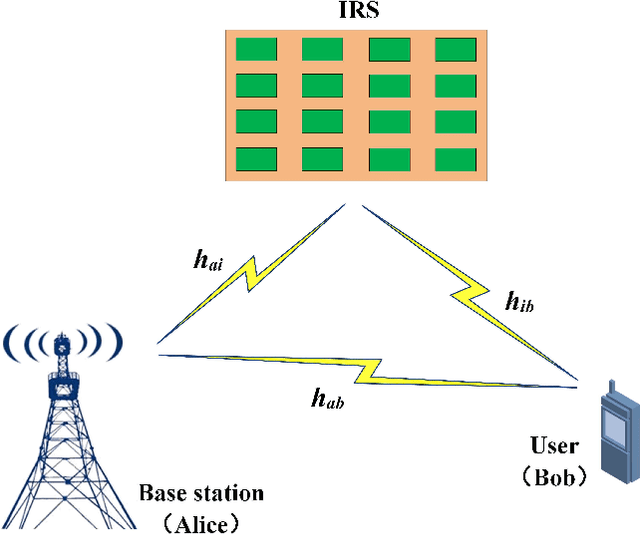
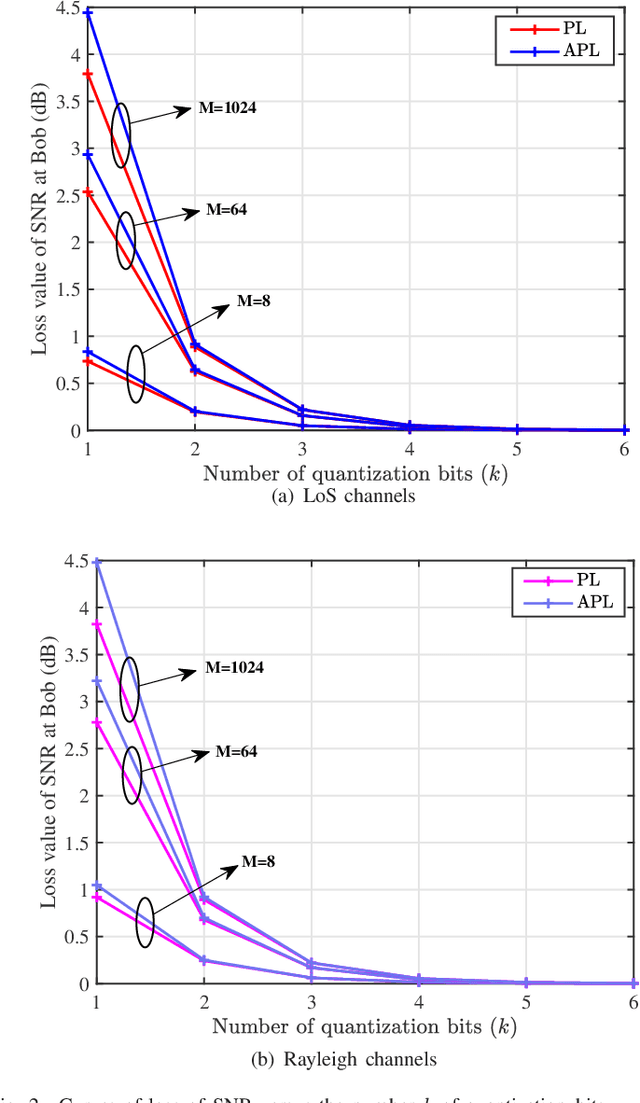
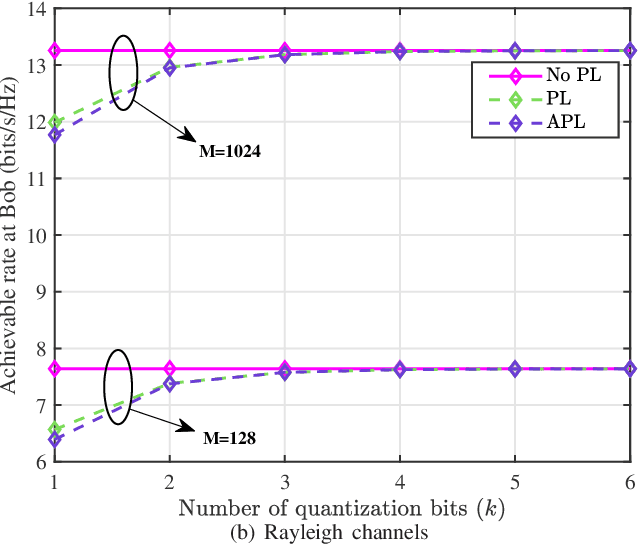
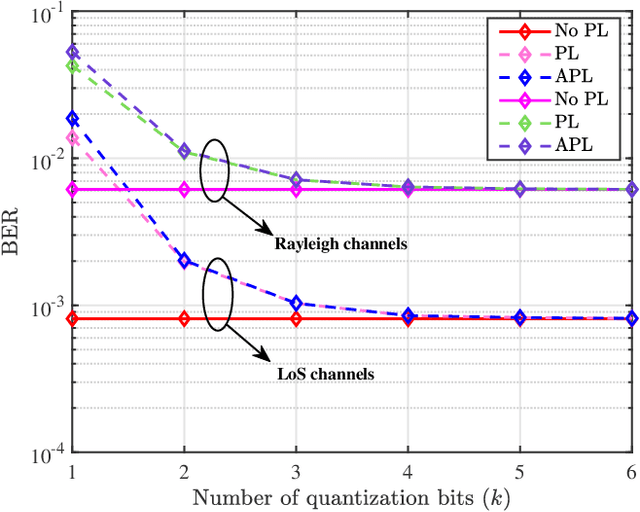
Abstract:Discrete phase shifters of intelligent reflecting surface (IRS) generates phase quantization error (QE) and degrades the receive performance at the receiver. To make an analysis of the performance loss caused by IRS with phase QE, based on the law of large numbers, the closed-form expressions of signal-to-noise ratio (SNR) performance loss (PL), achievable rate (AR), and bit error rate (BER) are successively derived under line-of-sight (LoS) channels and Rayleigh channels. Moreover, based on the Taylor series expansion, the approximate simple closed form of PL of IRS with approximate QE is also given. The simulation results show that the performance losses of SNR and AR decrease as the number of quantization bits increase, while they gradually increase with the number of IRS phase shifter elements increase. Regardless of LoS channels or Rayleigh channels, when the number of quantization bits is larger than or equal to 3, the performance losses of SNR and AR are less than 0.23dB and 0.08bits/s/Hz, respectively, and the BER performance degradation is trivial. In particular, the performance loss difference between IRS with QE and IRS with approximate QE is negligible when the number of quantization bits is not less than 2.
High-performance Estimation of Jamming Covariance Matrix for IRS-aided Directional Modulation Network with a Malicious Attacker
Oct 22, 2021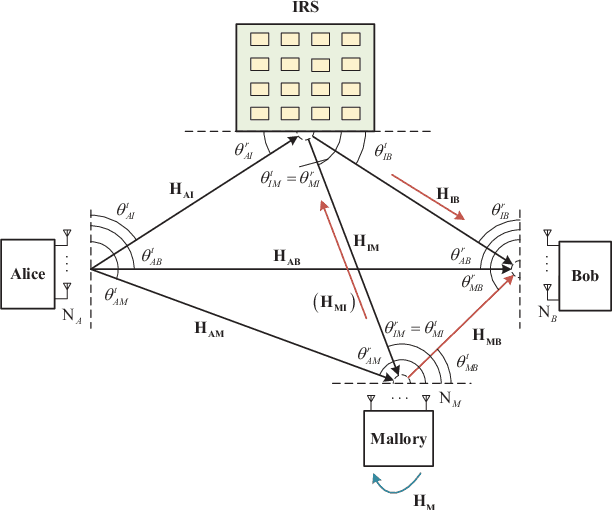
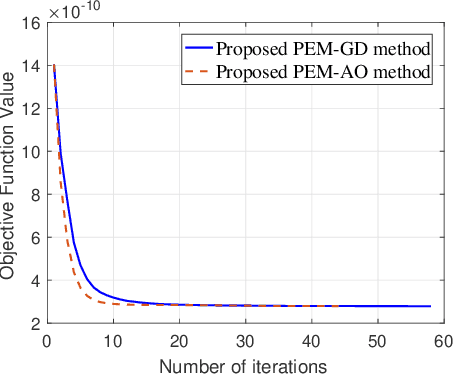

Abstract:In this paper, we investigate the anti-jamming problem of a directional modulation (DM) system with the aid of intelligent reflecting surface (IRS). As an efficient tool to combat malicious jamming, receive beamforming (RBF) is usually designed to be on null-space of jamming channel or covariance matrix from Mallory to Bob. Thus, it is very necessary to estimate the receive jamming covariance matrix (JCM) at Bob. To achieve a precise JCM estimate, three JCM estimation methods, including eigenvalue decomposition (EVD), parametric estimation method by gradient descend (PEM-GD) and parametric estimation method by alternating optimization (PEM-AO), are proposed. Here, the proposed EVD is under rank-2 constraint of JCM. The PEM-GD method fully explores the structure features of JCM and the PEM-AO is to decrease the computational complexity of the former via dimensionality reduction. The simulation results show that in low and medium jamming-noise ratio (JNR) regions, the proposed three methods perform better than the existing sample covariance matrix method. The proposed PEM-GD and PEM-AO outperform EVD method and existing clutter and disturbance covariance estimator RCML.
Fast Ambiguous DOA Elimination Method of DOA Measurement for Hybrid Massive MIMO Receiver
May 14, 2021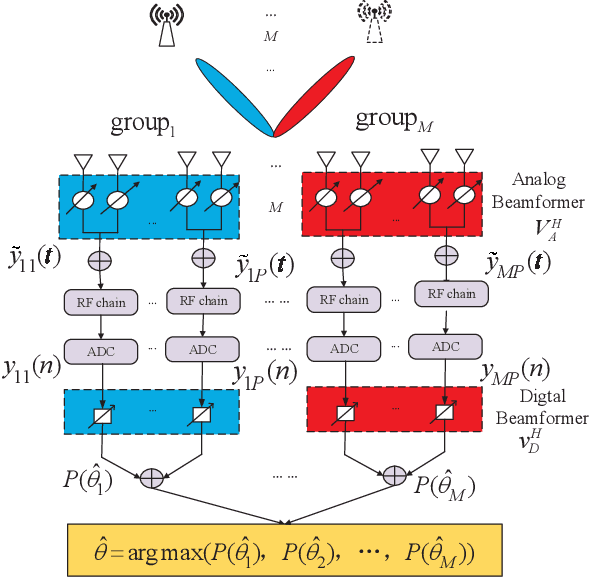

Abstract:DOA estimation for massive multiple-input multiple-output (MIMO) system can provide ultra-high-resolution angle estimation. However, due to the high computational complexity and cost of all digital MIMO systems, a hybrid analog digital (HAD) structure MIMO was proposed. In this paper, a fast ambiguous phase elimination method is proposed to solve the problem of direction-finding ambiguity caused by the HAD MIMO. Only two-data-blocks are used to realize DOA estimation. Simulation results show that the proposed method can greatly reduce the estimation delay with a slight performance loss.
 Add to Chrome
Add to Chrome Add to Firefox
Add to Firefox Add to Edge
Add to Edge